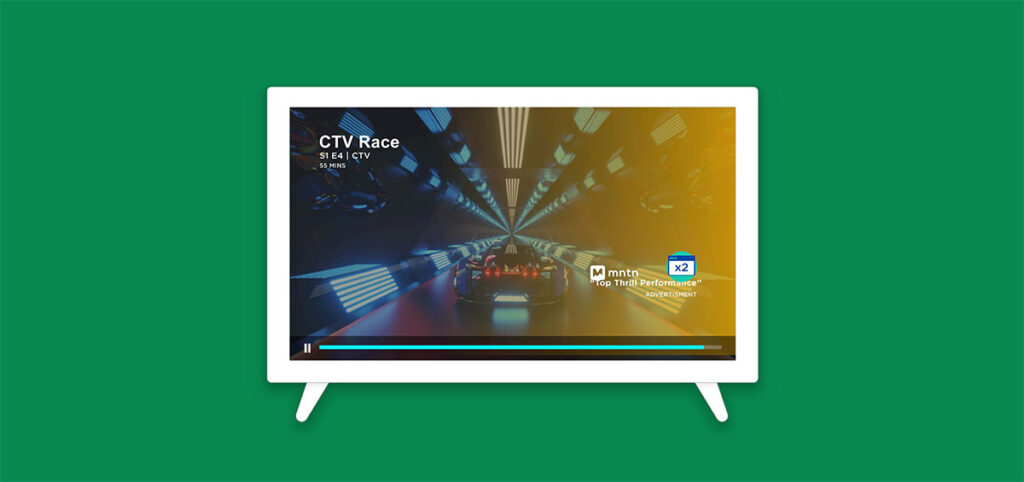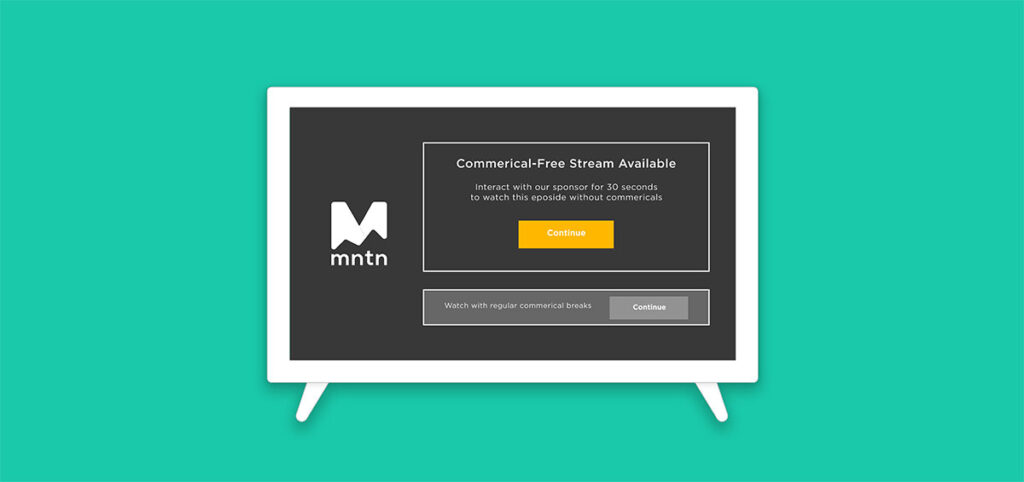Explainer
An Overview of Various Types of Streaming Ads
by Isabel Greenfield6 min read
Abstract
- While linear TV was constrained to standard, non-clickable ads, streaming has created an opportunity for innovation.
- Channels are making the most of their space, selling everything from the first impression to the pause screen.
- Viewers can benefit from new ad formats by shopping on the TV screen or receiving an ad-free experience in exchange for watching a longer pre-roll ad.
TV isn’t the only thing on the screen that has gotten a makeover in recent years. As technology has evolved the way people watch TV, so has the industry shifted to rethink the TV ads that accompany it. While the standard ad break still reigns supreme, platforms and third-party companies are striving to develop formats that make the biggest impact for advertisers while creating the best experience for viewers. While the types of ads are an ever-growing list, here are a few of the most common ad formats available to streaming advertisers.
Ad Types
Standard ad break: This is the most common type of ad unit within streaming content. Ads are either a 15 or 30-second video and they are non-clickable.

Interactive ads: Interactive ads on the other hand allow viewers to engage with the ad using their remote, hence the name interactive. There are many different formats of these interactive ads and companies are continuing to iterate. A few versions include:
- Shoppable Unit: Streaming services are offering the opportunity for viewers to buy with the click of their TV remote. Roku debuted their new shoppable unit at the Newfronts this year, which automatically adds an onscreen product to the viewer’s Roku Pay cart when they click the remote. Other services like Discovery+, are touting QR codes as their shoppable unit. While both these methods ultimately require a second screen, streaming channels are getting closer to cracking the code for onscreen shopping.
- Product Browser: This unit allows viewers to explore the products that the advertiser has to offer, without having to browse on a separate screen. These allow for customization based on the target audience, as well as a way to refresh the creative to engage users without having to make new video creative. The format can also be used in creative ways such as a car builder that allows viewers to explore the features an auto advertiser has to offer.

Pause Break: A pause break is true to the name and shows up when a user pauses. Typically, these are more subtle units because too much motion or sound can confuse a user looking to pause the video. They have the advantage, however, of being non-disruptive. The user has already elected to take a break and therefore the advertiser isn’t interrupting their viewing experience. Many of these ads include copy that speaks to the break-like nature, whether it’s a toilet paper brand or a food-delivery service. Streaming channels like Hulu and Roku have taken advantage of these types of ads.

Sponsored Stream: Called by multiple names, a sponsored stream also works on the idea of presenting ads to users when they are more willing to see them. At the beginning of a show, a user is asked if they would like to watch an extended ad, typically 90 seconds or more, in exchange for no ad breaks within the show. This exchange is valuable for both the advertiser and the viewer. The advertiser gets to be the sole name, benefiting from both the recency and primacy effect, while also getting to share a longer creative. The viewer gets a reduced ad load and a seamless viewing experience once they completed the preroll.
A company called TrueX (now called Infillion) was one of the first to offer this type of ad experience. As its popularity has grown, it’s been adopted more broadly. NBC’s advertising website boasts a “Binge” ad format that gives users an ad-free experience, courtesy of an advertiser, once they’ve watched two consecutive episodes, a slight variation on the original TrueX model.
Product Placement: Product placement is not a new concept in movies or TV, but one that continues to play a big role in advertising. In fact, according to Statista data, it accounted for $11.44 billion of advertising in 2019 alone. While product placement has historically been built in at the time of filming, with the advancement of computer vision, tech companies are racing to develop dynamic ad placement that would allow different target groups to see different products, in real-time.
Inventory focused: Some ad breaks don’t feature a new type of ad format, but instead take advantage of the inventory itself.
- First impression ads: Brands can take advantage of the primacy effect by reaching a user at the start of their streaming session. When an advertiser buys a first impression placement, they are buying the first ad that a viewer sees when they reach their first ad break.
- 100% SOV: Advertisers can also buy out all the impressions for a 100% share of voice (SOV) of a show. This may make sense for an advertiser that is closely aligned with the content (for example, a CPG brand surrounding a cooking show). However, showing the same ad over and over is a pet peeve of viewers so this is best used if the advertiser has a variety of creative assets.
What the Industry is Saying
Our primer format on MNTN Research will feature industry quotes wherever possible to showcase the buzz in the industry about the topic at hand.
That said, at the time of publication, there are not many industry takes on the developing ad break offerings. Most quotes are promotional in nature by individual channels looking to promote their own ad products. It is still early in the life cycle of ad formats as companies work quickly to develop new opportunities that take advantage of all available promotional spaces. It is also a non-standardized offering that will most likely coalesce as the popularity of alternate ad formats grows. Look for future guides as MNTN Research continues to watch this space.
Recommended Reading
To learn more about what individual channels are offering, take a look at some of the following articles:
- Learn more about Virtual Product Placement (Tech Crunch)
- Hulu launches the Pause Break (Tech Crunch)
- Roku announces shoppable ads (Ad Age)
Conclusion
Technology has allowed companies to be more innovative across the board, including within the ad breaks. New formats are being tested constantly to strike the right balance between advertiser and viewer needs. Each space within the streaming experience is up for grabs, from the pause screen to the content itself. Ads play an important role in the streaming experience and now a more dynamic one.
Subscribe to the MNTN Research Weekly
Sign up to receive a weekly feed of curated research, sent straight to your inbox.